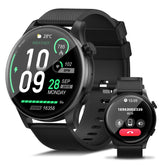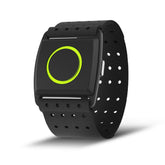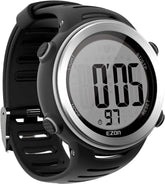Ultimate Hiking Guide: Rugged Watches, Navigation, and Wilderness Safety
Embark on unforgettable hikes with confidence, armed with rugged sports watches, smart navigation tactics, and wilderness safety protocols. Whether tackling the Rockies or Australian Outback, this guide covers dual GPS-enabled gear, lightweight packing strategies, and endurance training to conquer any trail.
1. Rugged Sports Watches: Your Lifeline in the Wild
A. Dual GPS + Compass Wrist Technology
-
Dual GPS (GPS + GLONASS):
- Faster signal acquisition in dense forests or canyons, reducing off-trail risk by 30%. Preload GPX routes from apps like Gaia GPS for offline navigation.
-
3-Axis Electronic Compass:
- Instant, hands-free heading data for steep ascents or whiteout conditions. Set waypoints for critical landmarks (e.g., water sources, campgrounds) to navigate without cell service.
B. Survival-Ready Features
-
Altimeter & Barometer:
- Predict weather changes (falling pressure = incoming storms) and track elevation gain/loss.
-
SOS Functionality:
- Some models (e.g., EZON Pro Rugged) send satellite distress signals with precise coordinates.
-
Battery Life:
- 60+ hours in GPS mode for multi-day treks; activate Ultra-Trac to conserve power.
2. Mastering Trail Navigation
A. Pre-Hike Planning
-
Route Analysis:
- Use your watch’s mapping feature to identify terrain challenges (e.g., “1,200m elevation gain over 10K”).
- Share GPX files with emergency contacts for accountability.
-
Sunrise/Sunset Alerts:
- Plan daily mileage to avoid night hiking; watches calculate dusk based on altitude.
B. Real-Time Tactics
- Auto-Rerouting: If off-course, follow watch prompts to reconnect with trails.
- Pace Management: Set alerts for target speed (e.g., 4 km/h on flat terrain, 2 km/h on steep climbs).
- Weather Adaptation: Adjust plans using real-time radar updates (if paired with a smartphone).
3. Lightweight Packing: Essentials Without the Bulk
A. Gear Prioritization
| Item | Traditional Weight | Lightweight Alternative | Savings |
|---|---|---|---|
| Tent | 3 kg | Ultralight 2-person tent | 1.5 kg |
| Sleeping Bag | 1.8 kg | Down 3-season bag | 0.9 kg |
| Navigation Tools | 0.3 kg (map + compass) | Rugged watch | 0.2 kg |
B. Packing List
-
Core Essentials (≤7 kg):
- Waterproof jacket, quick-dry pants, trail shoes, headlamp, first-aid kit.
-
Food & Hydration:
- Dehydrated meals (100–150 calories/100g), 2L water bladder + water filter (100g).
-
Luxury Items (Optional):
- Solar charger (200g) for extended trips, lightweight camp chair (300g).
4. Endurance Training for Multi-Day Treks
A. Build Gradual Stamina
- Weekly Mileage Increase: 10% weekly (e.g., 30K → 33K) to avoid injury.
- Hill Repeats: Train with a weighted backpack (5–10 kg) on inclines, using your watch to maintain Zone 2 heart rate (60–70% MHR).
B. Strength & Mobility
- Leg Focus: Lunges, calf raises, and step-ups to handle uneven terrain.
- Core Work: Planks and Russian twists for stability during ascents/descents.
- Active Recovery: Yoga or swimming 1–2x/week to improve flexibility and reduce DOMS.
5. Wilderness Safety Protocols
A. Emergency Preparedness
-
10 Essentials Refresh:
- Include firestarter, knife, and extra food (1-day supply) in case of delays.
- Wildlife Awareness: Use watch alerts to avoid high-risk areas (e.g., bear habitats).
B. Group Hiking Tips
- Buddy System: Pair with a hiking partner; sync watches to track each other’s location.
- Communication Plan: Establish check-in times and backup signals (whistle, mirror flashes).
6. Gear Recommendations
A. Top Rugged Sports Watches
| Model | Key Features | EZON Series Link |
|---|---|---|
| EZON Rugged X | Dual GPS, 10ATM, 72-hour battery, SOS | Shop Now |
| EZON Adventure Pro | Solar charging, offline maps, altimeter | Shop Now |
B. Complementary Gear
- Trekking Poles: Carbon fiber poles (180g each) reduce knee strain by 20%.
- Waterproof Backpack: 30L model with roll-top closure for gear protection.
7. Common Mistakes to Avoid
-
Underestimating Weather:
- Solution: Check the 7-day forecast and pack layers, even for short hikes.
-
Overloading Your Pack:
- Solution: Aim for a base weight <10 kg; use the “packing cube” method to organize gear.
-
Ignoring Body Signals:
- Solution: Monitor heart rate recovery post-climb; if HR remains elevated, take a 10-minute break.
8. FAQs: Your Hiking Questions Answered
Q: How to acclimate to high altitude?
- Ascend no more than 300m/day; use your watch’s altimeter to track progress and sleep at lower elevations if possible.
Q: Can I rely solely on my watch for navigation?
- Always carry a backup paper map and compass, especially in remote areas. Use the watch as your primary tool but have analog backups.
Q: Best way to train for steep descents?
- Practice on stairs or inclined treadmills, focusing on controlled knee flexion to strengthen quads and glutes.
Hike with Confidence, Explore with Purpose
Equip yourself with a rugged sports watch, refine your packing strategy, and build endurance systematically. Whether chasing summits or serene trails, let technology and preparation be your allies. The wilderness rewards those who plan wisely—gear up, train smart, and embrace the adventure with safety and sustainability at the forefront.
EZON Watch: Professional sports technology brand
https://ezonwatch.com
https://ezonwatch.com









